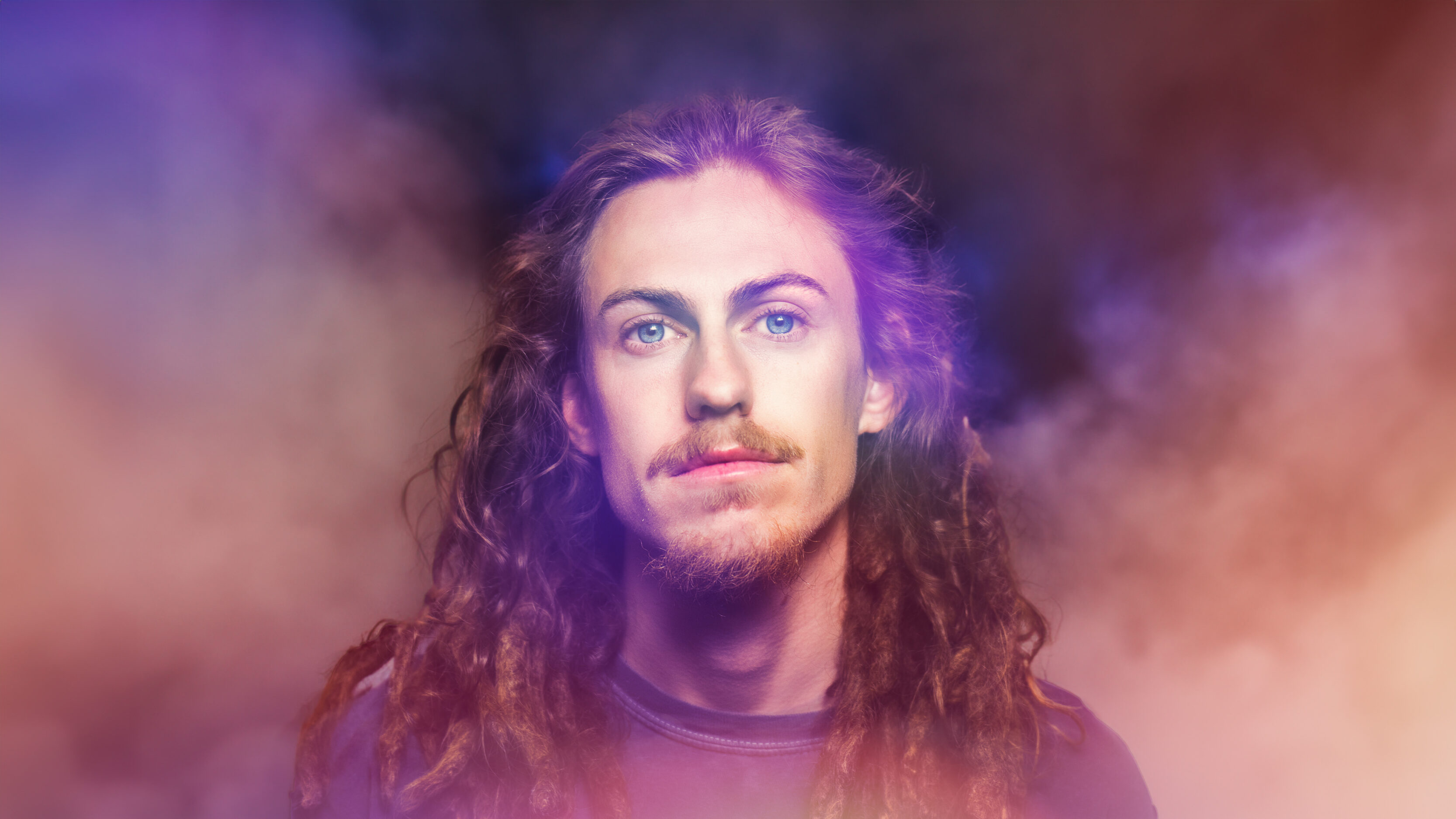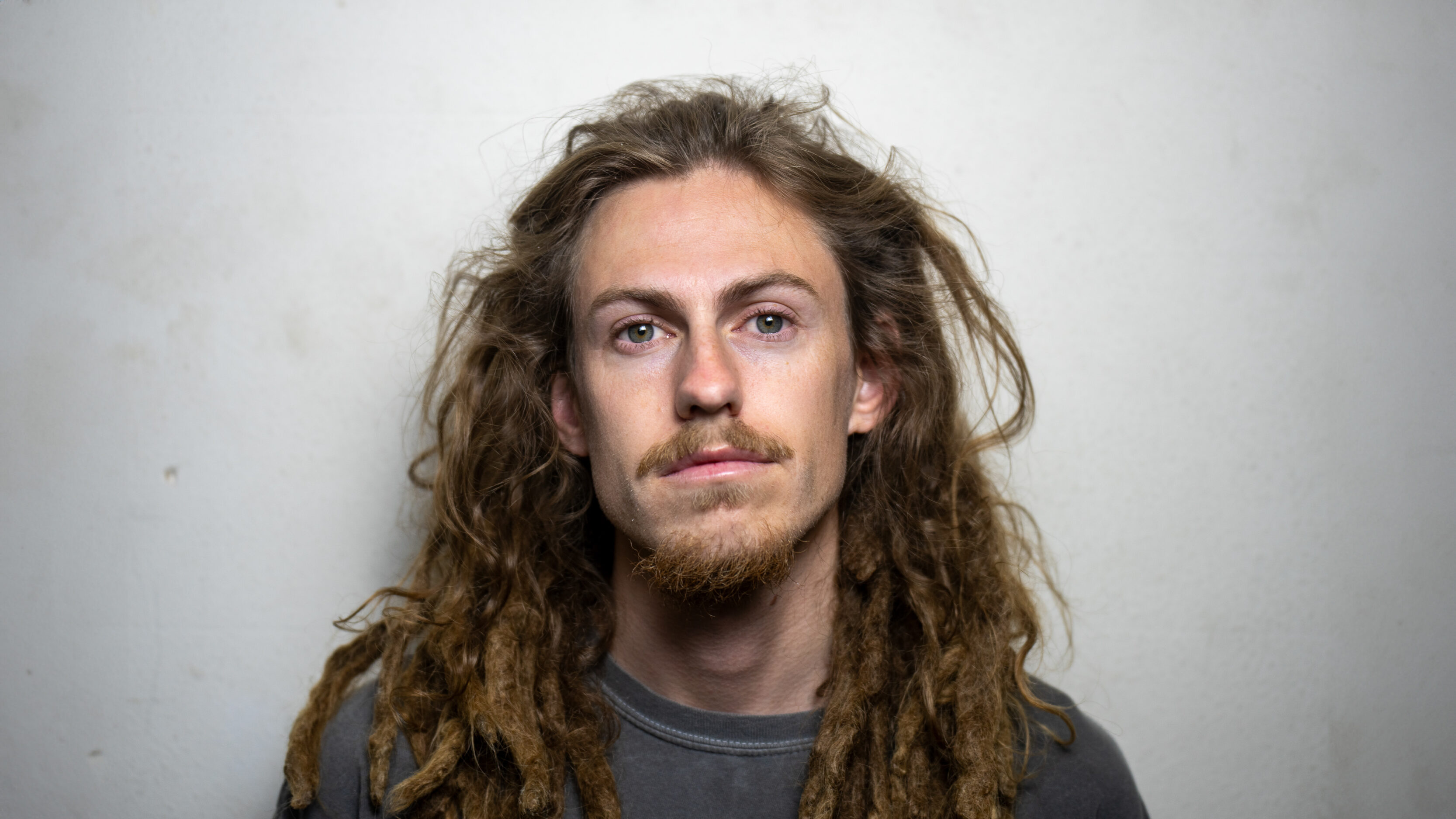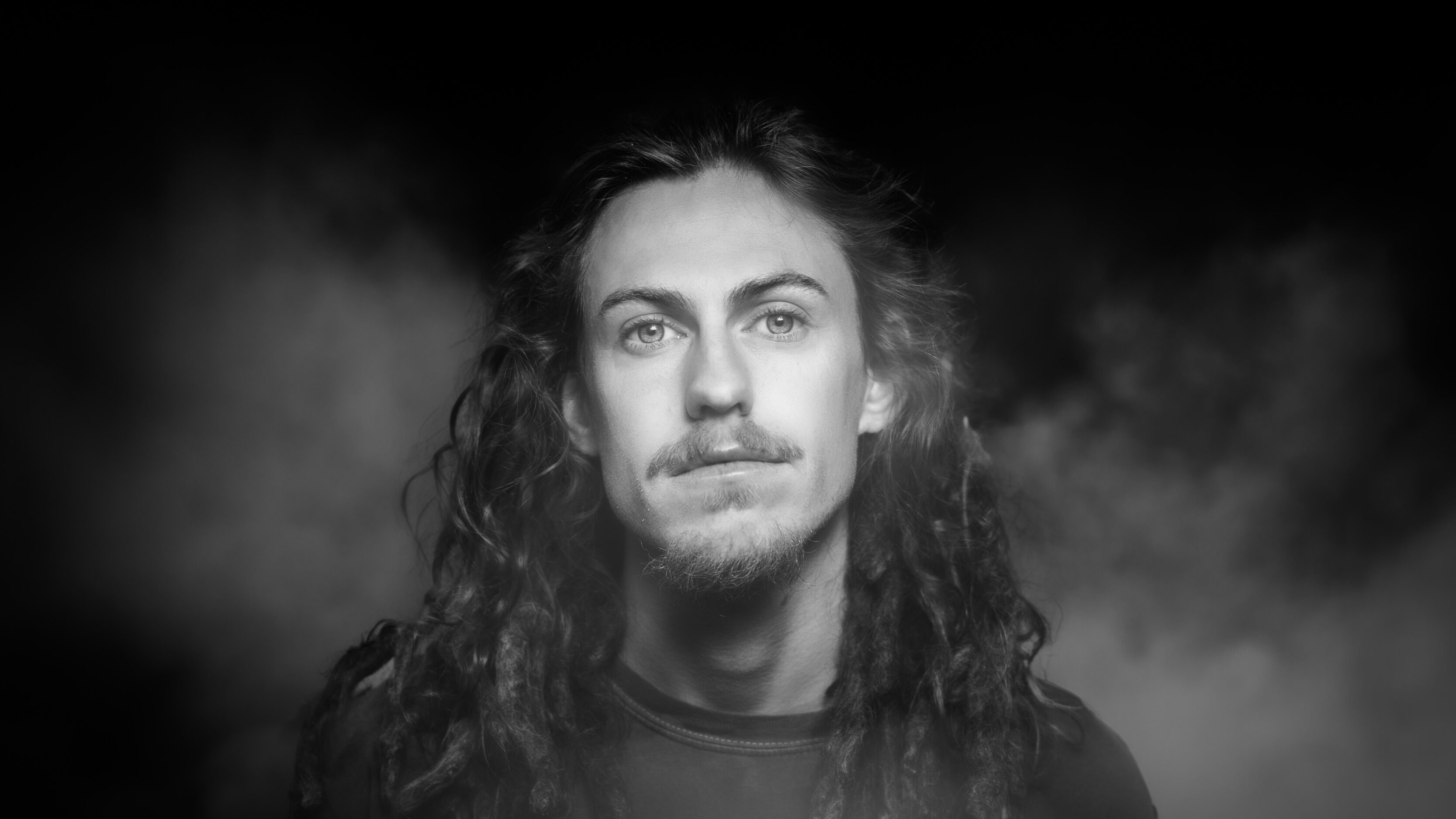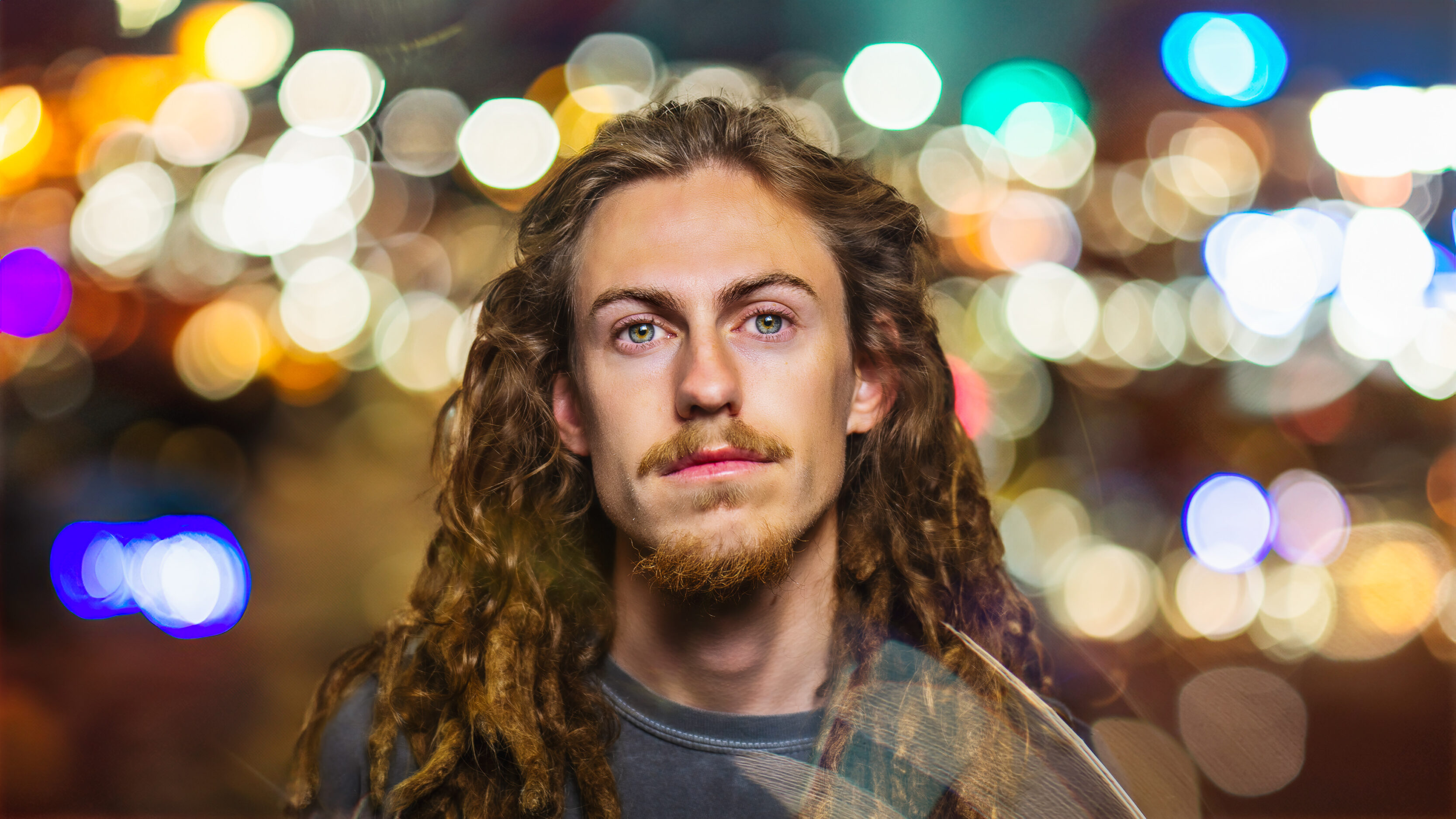
It is truly an amazing new world we’re living in right now. I know many photographers, and certainly people in many other professions, who fear the myriad artificial intelligence innovations coming at us. The pace is stupifying. I certainly have my concerns, but I enjoy exploring new boundaries in this amazing new world.
The photo above was shot in my garage, in poor lighting, at 3 am, and in a hurry. It started as an attempt to help my son Joshua in case his damaged passport was rejected at the airport. We were on our way to Mexico, and I knew he would need a passport photo to take to the Los Angeles Passport Agency if he could get a same-day appointment. Thankfully, nobody at any border cared. So I took the original, shown below, and decided to play with Adobe Photoshop’s new AI features.

As you can see, the lighting was truly horrible. It’s just not a good image as a result. But I always shoot in 14-bit RAW, so I know there is room to play, even without generative AI. So, the first thing I did was bring the image into Adobe Lightroom Classic to run some basic edits on it for lighting. Then I took it into Luminar Neo for some beginning AI magic.

As you can see, it was already a much better image. I know, without question, I could have stopped at simply making the background pure white and cleaning up his 3 am hair, but that wasn’t my goal. I decided to see what I could do, in a matter of moments, to transform the image into something different. After exporting the TIFF image out of Luminar Neo it was imported into Adobe Photoshop. Then I used the generative AI features to select the image’s subject, inverted it, expanded the border to include wayward hairs, and simply typed in the word “fog.” I gave it no other prompt.

The first image in this post resulted from going back and forth between Luminar Neo and Adobe Photoshop for about 30 minutes. I layered some fog elements and lighting effects over the background and foreground. The photo immediately above is a black-and-white treatment of the first photo in the post.
I can’t tell you how long this would have taken me to use any version of Photoshop more than six months old. It would have been many hours, at a minimum. This entire process, including taking the photos, transferring them and editing them to the point above, took 45-50 minutes. (It has taken me longer to write this post.)
I suppose I could have gotten very detailed and made them more “perfect” with more time. However, I wanted to see what was possible with minimal effort. It is truly an amazing new world we live in.

On the plane ride home, I decided to try a different look. I could have iterated for hours. Last week I noted on Twitter that photographers may need to adapt by finding new meaning and purpose in their work, just as painters did when they turned to impressionism, expressionism, and cubism to differentiate from the literal representations that cameras could capture.
For me, capturing people and sports will be my focus. Using AI to enhance them and reduce edit time will be a welcome benefit of this new world. I’ll still capture landscapes, but generative AI will quickly get to where even the most amazing sunrise captures will seem pedestrian.
It’s most certainly time to adapt and find new joys in this amazing new world.
100% OF PROFITS FROM PHOTO SALES ARE DONATED TO YOUTH TRACK & FIELD PROGRAMS!
EXIF Data Below Applies Only To The Featured Photo In This Post